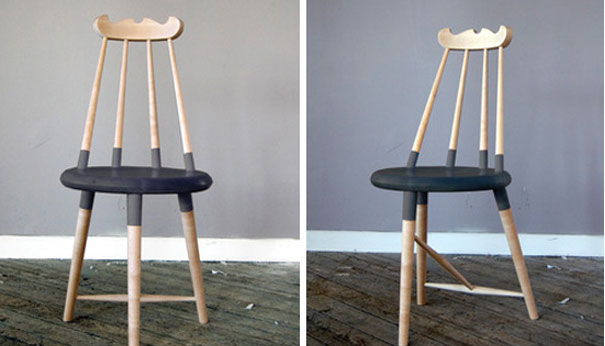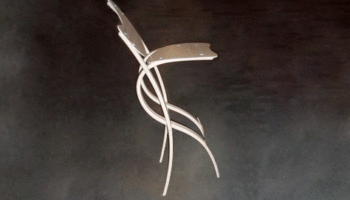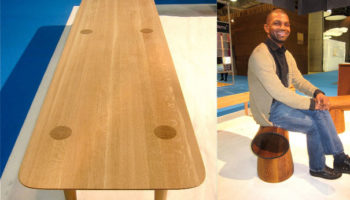Greet the Day with Timothy Liles’ Crested Comb-back Chair
‘ description of his Crested Comb-back Chair should give you some clues to both its origin and the designer’s aesthetic: “Domestic maple, milk paint; dimensions: 34" x 16" x 16" (18" seat height); an understated, three-legged wooden chair.” The characterization has a pared-down, simplified–even puritanical–feel that suggests a 19th. century New England aesthetic.
Crested Comb-back Chair. Designed by Timothy Liles.
And while the piece is, indeed, indebted to early American craftsman (and contemporary ones–the chair is built by Fred Chellis of Little River Windsors in Berwick, ME), that’s only half the story. The other half is Liles’ cosmopolitan background. Born and bred in Long Island, the designer arrived at his current home turf of Portsmouth, NH via detours in Providence (at the Rhode Island School of Design) and Boston (where he designed footwear for Converse). The North-ward trajectory seems to suit his sensibility. Now in his tenth year as a New Englander, he’s found that “the region has begun to inspire me in unexpected ways.”
The New England Collection definitely has its roots in the region, but the series also display a worldly eclecticism. This synthesis is a hallmark of all worthy homages, updatings, and re-visitings, and the Crested Comb-back illustrates this in spades. First, the three-legged construction is a pronounced nod of appreciation to the iconic Walter Pabst, whose structural innovation has inspired generations of designers. Next, the whimsical “sash of color” painting the chair’s midriff evokes any number of artists known for bold infusions of solid shades, from Sol Lewitt to Mark Rothko. And speaking of whimsy, the Comb-back’s silliness quotient is right up the alleys of playful designers like Pierre Paulin, Javier Mariscal, and the Campana Brothers, not to mention auteur film-makers like Tim Burton and Jeanne-Pierre Jeunet.
But all of this is merely suggesting the obvious: that Liles’ New England Collection does precisely what it sets out to do: promote a regional aesthetic, source local materials and labor, and ultimately embrace a storied regional style without feeling stuck in the past.
Via DesignBoom.






Leave a Reply